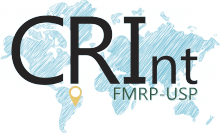The Ribeirão Preto Medical School (FMRP – Faculdade de Medicina de Ribeirão Preto, in Portuguese) was founded in 1952. The School was initially built in the city center. Still, since 1953 it has been located at an old coffee farm and thus constituted the initial nucleus of the Ribeirão Preto campus of the University of São Paulo.
In the first decade of operation, the School had already achieved national and international prominence. Receiving visitors such as Alexander Fleming (Nobel Prize of Biochemistry and the discoverer of penicillin), Bernard Houssay, and Corneille Heymans (both received the Nobel Prize of Physiology and Medicine) and Henrique da Rocha Lima (who was the first researcher to isolate the typhus’ bacteria).
Currently, the FMRP offers seven undergraduate courses:
SPEECH-LANGUAGE-THERAPY AND AUDIOLOGY
In applied teaching, the activities of the Medical School are:
- Primary hospital care (5 medical centers and 6 family health centers).
- Secondary hospital care (state hospitals of Ribeirão Preto and Américo Brasiliense, Reference Center of Woman’s Health, Integrated Rehabilitation center).
- Tertiary hospital care (University Hospital – Campus and Emergency Unit, Lucy Montoro’s Rehabilitation Center, Legal Medicine Center, Mental Health, Speech Therapy, Pathophysiology and Ophthalmology Laboratories, and Mouth-breathing Center).
The FMRP also offers 19 academic Master’s and Ph.D. programs and 4 Professional Masters’ programs. In teaching and research, the School is home to 2 FAPESP Research, Innovation and Dissemination Centers, the CEPIDs: Center for Cell-Based Therapy and the Center for Research on Inflammatory Diseases. It also has 10 Research Support Centers (NAPs) of the University of São Paulo.





